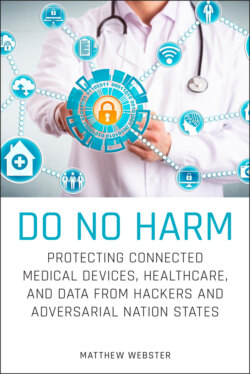Читать книгу Do No Harm - Matthew Webster - Страница 51
Data Mining Automation
ОглавлениеAnalyzing the volume of data that comes out of big data is not a minor undertaking. As the volume of data increases and we become more and more subtle in terms of our analysis of data, often it is worthwhile to get some extra help to analyze that data. Unsurprisingly, there are numerous ways to help with that analysis. Most people immediately start to think of artificial intelligence—partially popularized by IBM's Watson that beat out other contestants on Jeopardy in 2011 and partially by science fiction. While certainly artificial intelligence is used, often the term is overused by marketing teams. Some of the subcomponents of artificial intelligence are more than sufficient to meet the data analytics needs of many companies. For example, many tools use machine learning or deep learning for analytics purposes. Each method has its own pros and cons, and each may bring value depending on the context. Nonetheless, while there are many other tools for working with data, the range of tools that data scientists use to correlate data and discern patterns offer vast improvements over the activity that people perform on their own. Figure 3-1 demonstrates the relationship between the different technologies relating to data science and artificial intelligence. For purposes of simplicity, let's use the term artificial intelligence broadly to talk about the full range of available tools, although it is not technically accurate.
Figure 3-1: Relationship of data science to enablement technologies
One thing to keep in mind is that artificial intelligence and many of the related tools are in their infancy and require tremendous amount of maturation to meet their full potential. Even in the healthcare market, the full potential has yet to be reached. McKinsey and company identified three stages of artificial intelligence uses that are helpful to highlight the context. The first phase is that we are striving to work on repetitive and largely administrative tasks to reduce the existing workload. We are beginning to see this for specializations that work with images as well. The second phase is to use artificial intelligence in home care—often related to remote monitoring. In this phase artificial intelligence will be utilized more often as an aspect of the connected devices themselves. Phase three will be focused more on being embedded within the clinical processes.34 Being a cautious technological optimist, I am sure there will be further applications of artificial intelligence in the future, especially when it is tied to robotics.
It is important to look more deeply at these phases described by McKinsey. Having artificial intelligence injected into telemedicine has tremendous potential to push medicine into a more proactive mode than ever before. If we took the technology within health applications and tied them into augmented forms of monitoring devices that tie into artificial intelligence systems, we could begin to detect potential medical issues (or diseases) early prior to onset of symptoms. The proactive measures of some of the simpler forms of artificial intelligence are already saving us millions of dollars and countless lives every year; just imagine how many more people and how much more we could save with more fine- grained medical information.
Another area of interest for artificial intelligence is data mining EHR records, which does include mining the records of IoMT devices to look for predictors of risk. Obviously, this is another proactive measure that companies are focusing on. What is interesting is that this process is valuable from multiple angles. The hospital is doing it to help their patients, and the IoMT device providers are using the information not only to help patients, but also to fuel the next generation of improvements in the devices. The more data you have, the more you know what you need to go after from a data perspective. That information can be used to focus product innovation. Quite often, this ties back to the Silicon Valley business model, which works with hospitals and other health practitioners to get feedback from them about improvements that need to be made. This, in turn, will increase the amount of data, which is a small part of the reason we will continue to see more data in the years to come.
